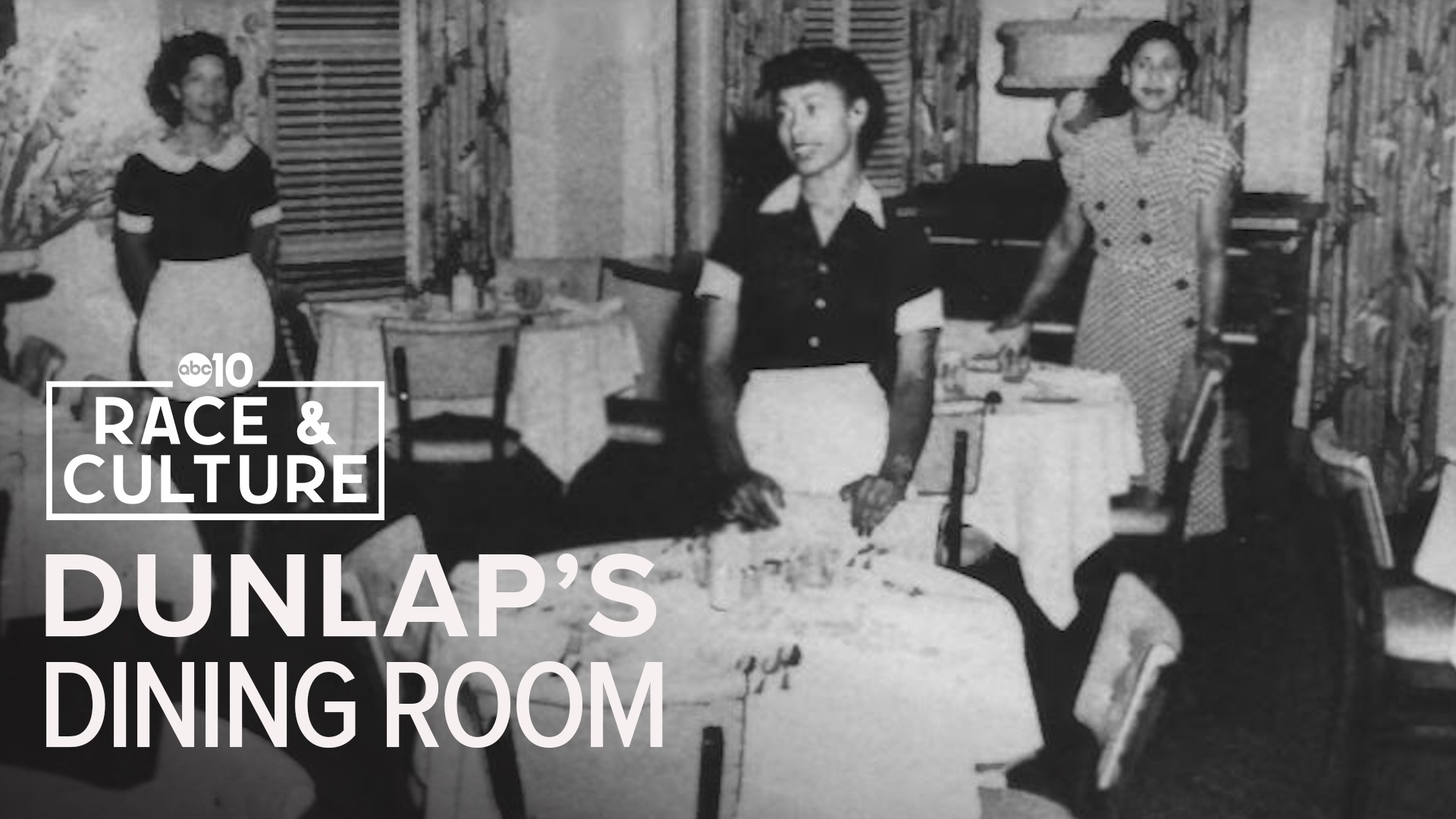SACRAMENTO, Calif. — During the segregation era, discriminatory laws and practices made traveling by car a dangerous experience for Black people across the United States.
Along the nation’s highways, Black travelers were routinely denied access to essential services like gas, food, restrooms and lodging. If Black people stopped or visited an unfamiliar place, they carried the risk of humiliation, threats or racial violence.
Black people relied heavily on the Green Book to find safe and friendly accommodations. The Green Book was a pocket-sized travel guide created by Victor Green, a Black postal worker, entrepreneur and innovator. It listed thousands of establishments across the nation, such as motels, restaurants, service stations and other accommodations, that either served Black people or were Black-owned businesses.


The Green Book was published from 1936 to 1966. In the 1952 edition, eleven establishments are listed in the book from the Sacramento area, including the historic Dunlap's Dining Room in Oak Park.
George T. Dunlap owned and operated The Dunlap’s Dining Room. Born in Sacramento in February 1884, Dunlap made a distinct contribution to local and regional history as a successful Black entrepreneur in the food service industry.


Over the years, Dunlap gained food service experience while working as a chef for the Southern Pacific Railway. He worked on private cars, serving Southern Pacific superintendents. While on a trip in Oakland, Dunlap met and fell in love with a woman named Annie Louise Butler.
The couple married in 1907 and started a family in Sacramento, including two daughters, Audrey and Doris Dunlap. That same year, Mr. Dunlap built a four-room cottage, becoming one of the first African-American families to build in the Oak Park neighborhood.
Two of Mrs. Dunlap’s nieces eventually came from Oakland to live with the Dunlap family during World War I. Additions were made to the house to accommodate the growing family. The house went from a four-room one level structure to an eight-room two level structure.
As the Dunlap family grew, so did business. Dunlap eventually started a private catering venture and operated two restaurants in downtown Sacramento. The first restaurant was at 621 J Street and the second restaurant was at the Capitol Hotel. But, the Dunlap's most cherished restaurant was the Dunlap's Dining Room. Together, Mr. and Mrs. Dunlap opened the fine dining restaurant on Mar. 29, 1930 in their home at 4322 Fourth Avenue.


The Dunlaps transformed the entire first floor of their home into a well-organized and smoothly operated business. For 38 years, Dunlap’s Dining Room attracted distinguished families, social clubs, business organizations, religious groups and prominent people throughout the Greater Sacramento region.
Even though Dunlap’s Dining Room was Black-owned and served people of color, the restaurant primarily catered to middle-class white people due to economic reasons.
When the restaurant opened in 1930, Sacramento County only had about 1,485 Black people out of a total population of 141,999. During these times, many local Black businesspeople, including Mr. and Mrs. Dunlap, geared their products and services toward the white majority to survive in a depressed economy with an extremely small Black population.
Dunlap’s Dining Room did not have a menu. The three classic entrees were chicken, fried or smothered, baked ham, or T-bone steak. The restaurant also offered a soup of the day, with no recipe, and a variety of desserts, like Bavarian creme, lemon ice-box cake and angel food supreme.
The restaurant operated as a significant eating establishment in Sacramento until Mr. Dunlap’s retirement in 1968. The Dunlap family home is still standing in Oak Park. In 1992, it was listed on the National Register of Historic Places. For many older Sacramentans, the house is a reminder of Black history, culture and traditions. The house is now operating as an Airbnb space, open to the public.
By the time Dunlap reached his late 60s, he received a number of awards and honors in recognition of his successful career.
In 1949, he received a coveted award for "Outstanding Performance, Food Service" at the California State Fair. Dunlap's first contract for the food service concession at the California State Fair began in 1917 and his service there was operated for 41 years. In 1958, when Dunlap retired from participating in the state fair, he was given another award for his years of successful food service at the statewide event.
In 1952, Dunlap was appointed to the California State Agricultural Society. His membership included serving as advisor in the development of food service displays and operations as a representative of the Society. Dunlap and his daughter, Audrey, were also special guests at the dedication and opening of the California State Railroad Museum.

